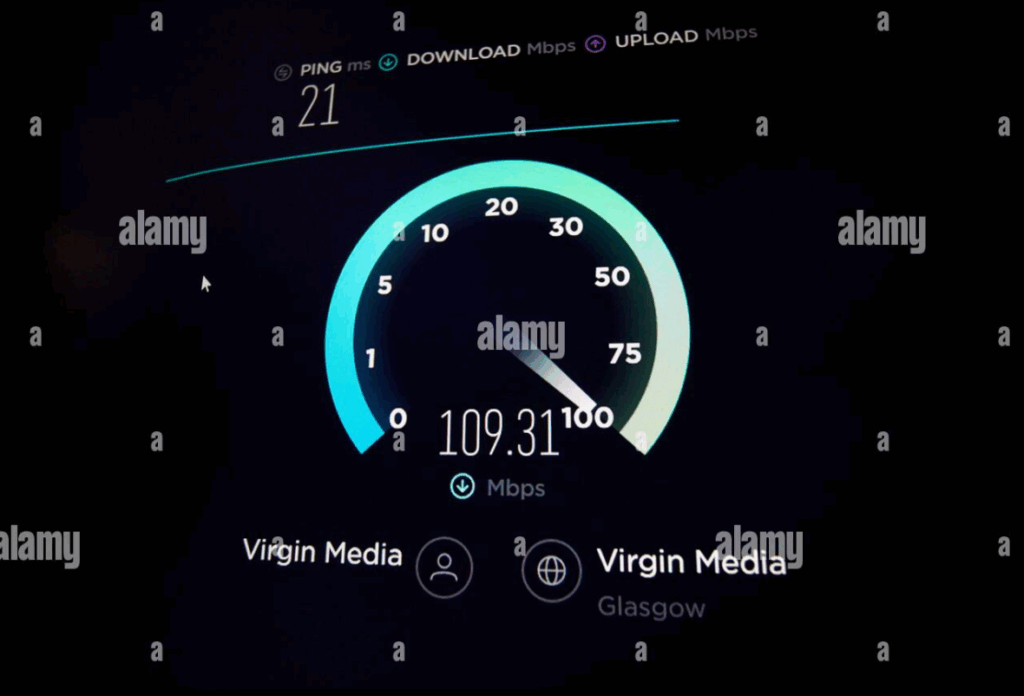In our hyper-connected world, a reliable internet connection is no longer a luxury but a necessity. From powering remote work and online education to streaming entertainment and connecting with friends, our daily lives revolve around bandwidth. Amidst a sea of plan options, one benchmark consistently emerges as the gold standard for most households: the 100 Mbps internet connection. But is this speed truly sufficient for your needs? This guide will help you navigate the digital landscape and determine if a 100 Mbps plan is your ideal fit.
Understanding what this speed offers is the first step. A 100 Mbps internet connection provides the bandwidth to handle nearly any common online activity with ease. It allows for seamless high-definition video streaming, rapid file downloads, lag-free video conferencing, and smooth online gaming. For the average user or family, it represents a significant step into high-speed internet without venturing into the premium, and often more expensive, gigabit-tier plans.
Decoding Your Internet Usage: Is a 100 Mbps Internet Connection Right for You?
The suitability of a 100 Mbps internet connection hinges entirely on your specific online habits and the number of users in your home. A single professional who primarily uses the internet for emails, web browsing, and standard-definition video calls will have vastly different requirements than a family of four where everyone is simultaneously gaming, streaming 4K movies, and attending Zoom meetings. Your usage pattern is the most critical factor in determining the right plan.
Furthermore, it’s essential to think about device congestion. A modern home isn’t just filled with laptops and phones; smart TVs, gaming consoles, tablets, smart speakers, and even thermostats all compete for bandwidth. A 100 Mbps internet connection acts as a robust digital highway, capable of handling this traffic from multiple devices at once without significant slowdowns, ensuring everyone can do what they need online without interruption.
The Activity Breakdown: What Can a 100 Mbps Internet Connection Handle?
To visualize the capability of a 100 Mbps internet connection, it’s helpful to break down common activities. For example, streaming a 4K Ultra HD movie on a service like Netflix typically requires about 25 Mbps. Video conferencing on Zoom or Microsoft Teams needs around 5-10 Mbps for HD quality. Online gaming is less about raw download speed and more about low latency (ping), but it still requires a stable 10-25 Mbps connection for optimal performance, especially when downloading large game updates.
This means that on a robust 100 Mbps internet connection, a household could theoretically have one person streaming a 4K movie (25 Mbps), two others engaged in HD video calls (10-20 Mbps total), another person downloading a large file (40 Mbps), and still have bandwidth leftover for other devices to browse social media or check email without anyone experiencing buffering or lag. It provides a comfortable and versatile cushion for diverse, simultaneous use.
Testing Your Needs: How to Gauge Your Current Speed
Before deciding on an upgrade, you must first understand your current internet performance. The easiest way to do this is by running an online speed test. Reputable services like Speedtest by Ookla measure your download speed (how fast you receive data), upload speed (how fast you send data), and latency (the reaction time of your connection). This snapshot is invaluable for diagnosing problems and comparing your real-world performance to what your ISP promises.
To get an accurate reading for your potential 100 Mbps internet connection needs, ensure you conduct the test correctly. Connect your computer directly to your modem with an Ethernet cable for the most accurate result, as Wi-Fi can introduce slowdowns. If using Wi-Fi, be close to your router. Close all other applications and browser tabs that might be using bandwidth. Run the test at different times of day—evening hours often see more network congestion—to get a full picture of your internet health.
Making the Decision: Upgrading to a 100 Mbps Internet Connection
If your speed test results consistently fall below your household’s demands, upgrading to a 100 Mbps internet connection is a logical and often cost-effective next step. This speed tier is widely available from most providers and strikes an excellent balance between performance and price. It future-proofs your home for new technologies and higher-resolution content while solving the immediate pain points of buffering and lag during peak usage times.
Before finalizing your decision, consider a few final factors. Evaluate the upload speed that comes with the plan; a 100 Mbps internet connection should ideally have an upload speed of at least 10-20 Mbps for effective video calls and file sharing. Also, remember that your Wi-Fi router is just as important as your plan; an outdated router can bottleneck a fast connection. Investing in a modern, quality router ensures you get the full value and performance from your new 100 Mbps internet connection.
